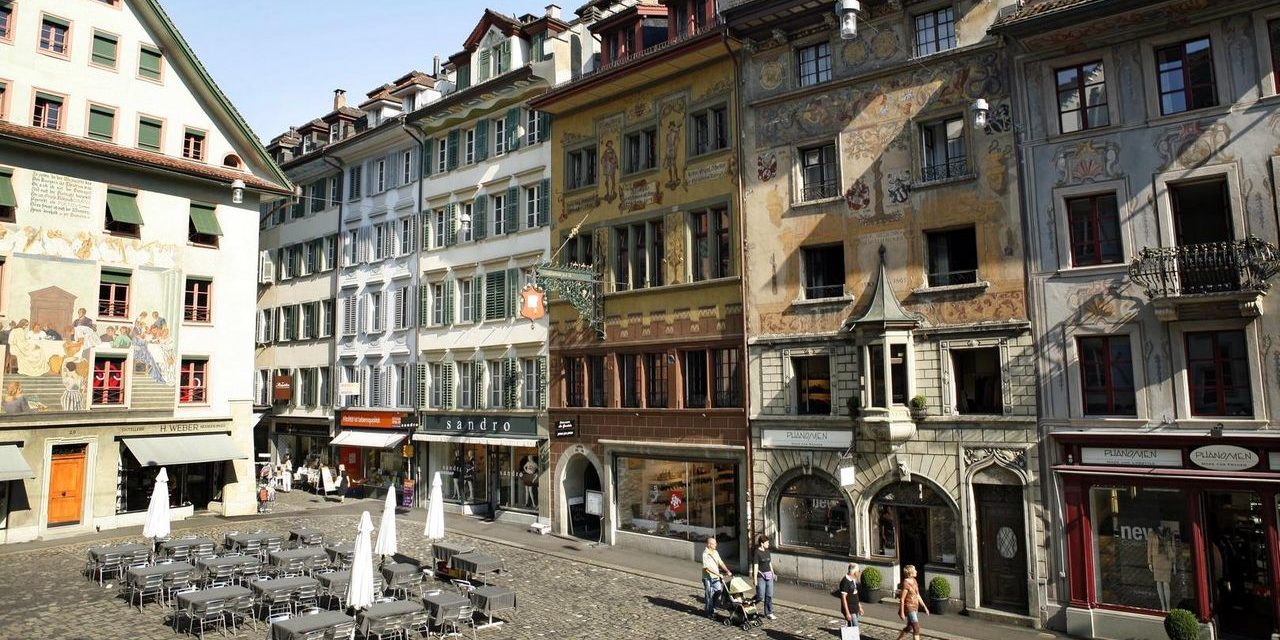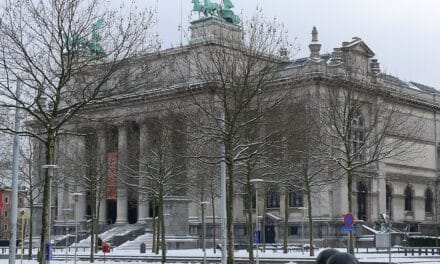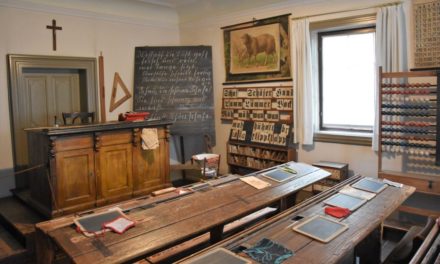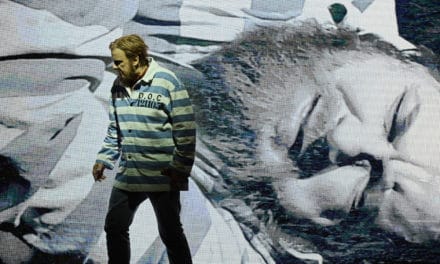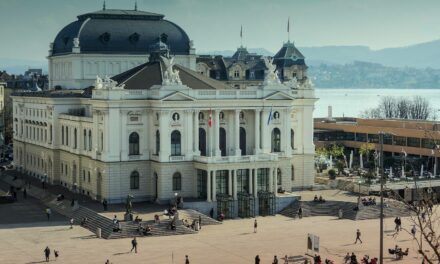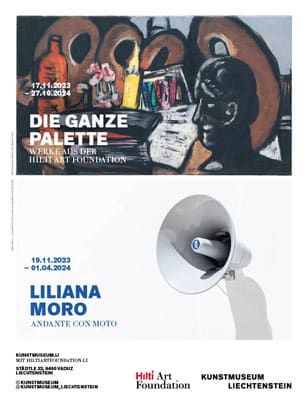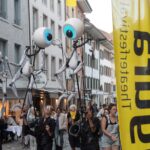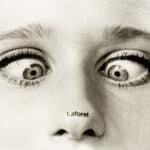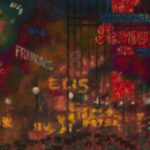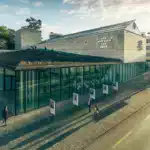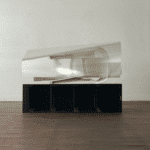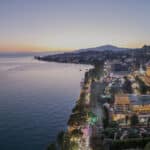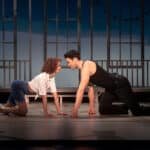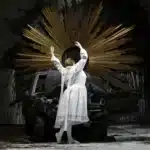In the car-free old town, historic houses decorated with frescoes line the picturesque squares. If you open your field of vision here, you will enjoy the countless architectural, artistic and cultural-historical details.
The Wine Market
For example, on the pretty wine market, where the people of Lucerne invoked the confederacy with Uri, Schwyz and Unterwalden in 1332. The wine market was also a fish market until the middle of the 16th century. With the demolition of the two-storey, wooden market hall for the sale of meat, bread and leather in 1841, the square was created in its present form. The Weinmarktbrunnen from 1481 is considered the most beautiful fountain in the city and is the work of Konrad Lux, who worked on it for ten years until its completion. The hexagonal basin was replaced by an octagonal basin in the 16th century. The fountain stock was also worked on several times until sculptor Leopold Häfliger finally chiseled today's fountain stock out of shell limestone. The original is now in the Historical Museum on Pfistergasse.
The Mill Square
The Mühlenplatz, which was only created in the late Middle Ages by the demolition of a row of houses, is the largest historic square in Lucerne with its approximately 1500 square meters. During excavations in the vicinity of the square, it was discovered that the Mühlenplatz was already used as a settlement area before Lucerne became a city. In the Middle Ages, the district was mainly characterized by its proximity to the river and the use of hydropower by means of a wide variety of mills.
The Kornmarkt and Hirschenplatz
Around 1370, the city built a public department store on the Kornmarkt. It also served as a granary and was later converted into the town hall. The traditional houses on Hirschenplatz impress with their fascinating façade decorations, which are listed as historical monuments.
The Chapel Square
On the Kapellplatz, where the carnival figure "Brother Fritschi" is said to be buried according to legend, the colourful Fritschi Fountain stands today. The fountain stock shows the Fritschi family. Above them are masks from the turn of the last century, as well as the Bearer of the Spell, who sits enthroned at the top. Every year on Dirty Thursday, the carnival begins on the Kapellplatz, which has the city firmly in its grip for a week and ends in the early morning hours of Ash Wednesday.

